ISSN ONLINE(2319-8753)PRINT(2347-6710)
ISSN ONLINE(2319-8753)PRINT(2347-6710)
| Salman H. Abbas Associate Professor, Department of Mathematics, College of Science, University of Bahrain, Kingdom of Bahrain |
| Related article at Pubmed, Scholar Google |
Visit for more related articles at International Journal of Innovative Research in Science, Engineering and Technology
This paper presents a new parallel algorithm for computing the determinants of block matrices of order ð‘¤ × Ã°Â‘¤, with Computational Complexity 𑂠𑤠3ð‘ž2 2 , using the Gauss elimination method and Abbas's block method 7 as references. We present our algorithm using Ada-multitasking. The algorithm is numerically stable and has been tested in the Sequent Balance machine with efficient utilization of all processors
KEYWORDS |
| Determinants, Gauss elimination method, Multitasking, Theoretical and experimental costs. |
I.INTRODUCTION |
 |
| The time spent on inter-processor communication will be dominant constraint on the performance of optimal algorithm when the matrix and multiprocessor sizes are Large. Some authors have discussed the effect of the communication network of multiprocessor on the communication costs incurred when using a multiprocessor 1 , 2 , 3 ,and the effect of the Communication costs on the execution time of parallel algorithm 4 , 5 . The outline of this paper is as follows: we describe our algorithm and problem assumptions in Section 2. In Section 3, we describe the parallel algorithm. In Section 4,we give the total costs of the sequential and parallel algorithms. We briefly summarize the results and make Concluding remarks in Section 5. |
II. RELATED WORK |
 implementationCan be used to improve the efficiency in terms of the speedup and the number of processors. It is mentioned in [13]The total cost for computing the determinant is bounded by O(m2) arithmetic operations ,where m is the size of the determinant which is exactly similar to our algorithm. Finally in [14] , a new method was developed to calculate every determinant of size nxn (when n>2),by calculating four determinants of size (n-1)x(n-1) and one determinant of size (n-2)x(n-2) on condition that (n-2)x(n-2) to be different than zero.It is reported that the time complexity of this method is O(n). implementationCan be used to improve the efficiency in terms of the speedup and the number of processors. It is mentioned in [13]The total cost for computing the determinant is bounded by O(m2) arithmetic operations ,where m is the size of the determinant which is exactly similar to our algorithm. Finally in [14] , a new method was developed to calculate every determinant of size nxn (when n>2),by calculating four determinants of size (n-1)x(n-1) and one determinant of size (n-2)x(n-2) on condition that (n-2)x(n-2) to be different than zero.It is reported that the time complexity of this method is O(n). |
ALGORITHM |
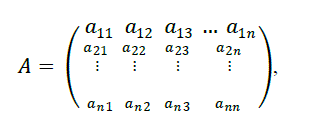 |
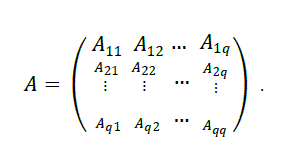 |
III. PARALLEL ALGORITHM |
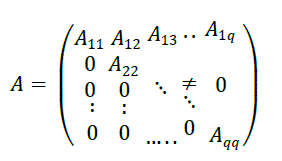 |
A) SEQUENTIAL ALGORITHM COST |
| In the sequential mode the cost depends only on the number of arithmetic operations required for the algorithm. So, reducing the blocks below the diagonal to zeros requires: |
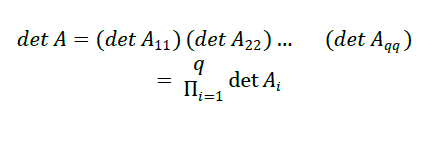 |
 |
IV. PARALLEL ALGORITHM COST |
| Here,we give the predicted cost of the algorithm mentioned in the previous section 3 in terms of arithmetic operation count, communication cost and data sending. A test program was written to measure these quantities. The estimate of the cost of one arithmetic operation, ïÿýïÿýƒ, is0.26 millisec, the time to set up one rendezvous, ïÿýïÿýïÿýïÿý , is 2 millisec and the time to send one data item,ïÿýïÿýïÿýïÿý ,is 0.02 millisec. |
| The following table describes the number of multiplication and additions and the number of steps required for each operation. It is assumed that there are at least ïÿýïÿý processors. |
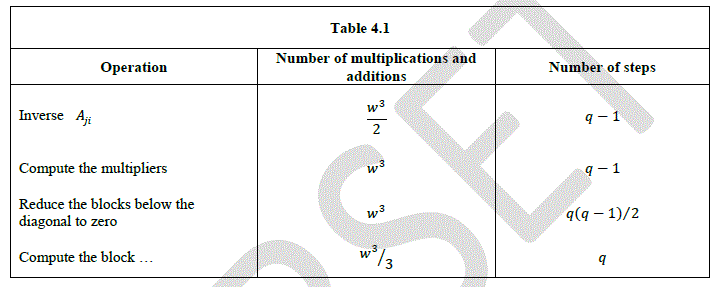 |
 |
COMPUTATIONAL RESULTS |
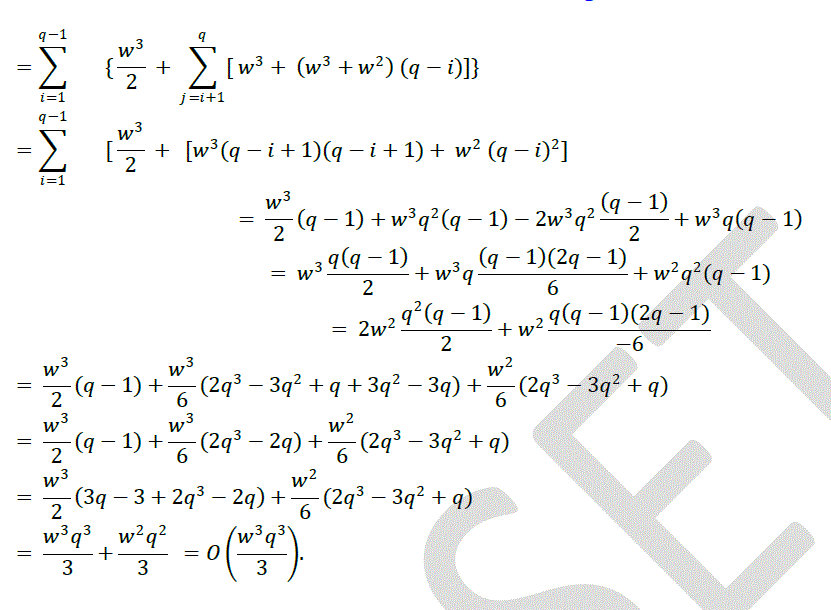 |
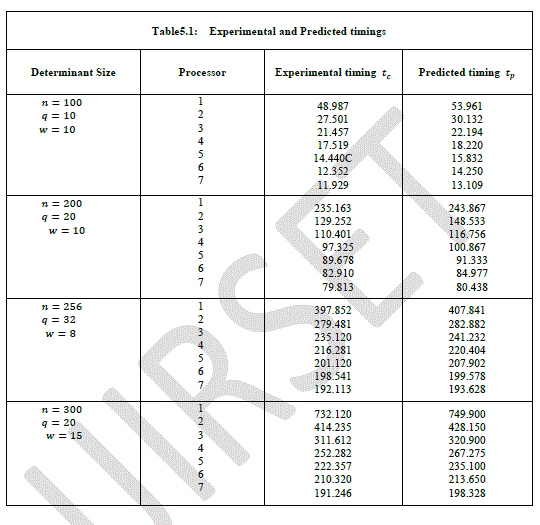 |
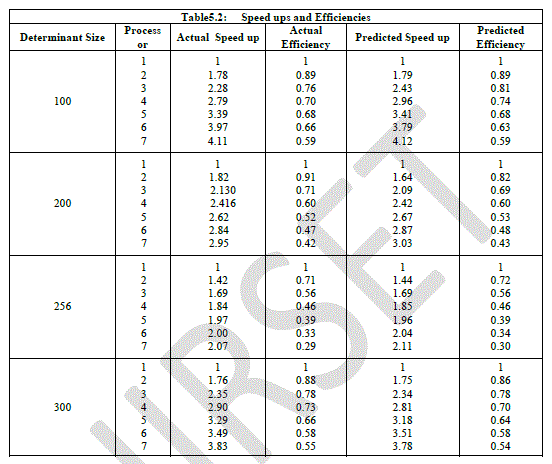 |
| From the above tables we have seen that several runs for different sized determinant is made. Table 5.1 is presented the predicted timings which was calculated from the formula (3) and the corresponding the experimental timings. It is noteworthy to point out that performance improves with increasing the number of processors. In table 5. 2, we give the predicted speed up and efficiency and corresponding for the experimental. |
| We observe that our theoretical estimate of the speed up and efficiency predicts accurately the performance of the algorithm. This occurs because the sizes of the determinants are very large. In practice if the size of the determinants have the same number of processors we might have a poor speed up and efficiency [10]. |
V. CONCLUSION |
| In this paper we have developed a parallel algorithm for computing the determinants in the multiprocessor computer. The advantages of the algorithm are ease of implementation and good suitability for parallel computing. It is designed to handle large determinants whose storage requirements cannot fit on a single computer. Also we can conclude that our proposed algorithm reaches good efficiency even with increasing of the number of processors. |
VI. ACKNOWLEDGMENTS |
| The author is grateful for financial support from the University of Bahrain, the project No. 2012/55. |
References |
|